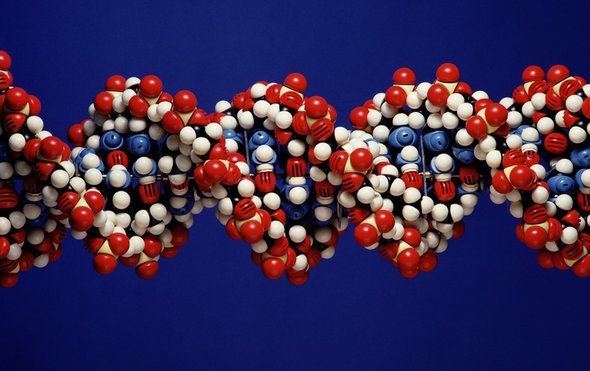(单词翻译:单击)
听力文本
This is Scientific American — 60-Second Science. I'm Christopher Intagliata.
When Europeans arrived in the New World, they carried with them microscopic, deadly organisms... like smallpox, measles and flu... which caused devastating outbreaks among the indigenous people.
One of those outbreaks was what became called the cocoliztli epidemic of 1545, among the people known as the Mixtecs, in what is today southern Mexico. The victims suffered rashes and fevers; blood streamed from their eyes, noses and mouths. Millions died. But we're still not sure what caused it.
So scientists looked to 10 victims, buried in communal graves in one of the afflicted towns, for clues. They sequenced DNA from within their pulpy tooth cavities. Most studies of ancient bones ditch all the associated microbial DNA, so that only the host's DNA is analyzed. But in this case the bacterial and viral DNA were the stars of the show. Which also meant a lot more genetic data to sift through.
"The difference is the needle in the haystack." Noreen Tuross, a biochemist at Harvard University. "This is a much bigger haystack."

Using a new algorithm to help them dive into that huge haystack, they found a needle: genetic evidence of the deadly Salmonella enterica Paratyphi C bacterium, which causes enteric fever.
The results are in the journal Nature Ecology & Evolution.
The researchers stopped short of pinning the epidemic on the salmonella alone. "Could there have been other organisms around? Yes. We didn't find them. How do you know that what you didn't find isn't there? That's ridiculous."
And it's uncertain the disease had European origins—though there is evidence it existed in Norway, three hundred years before Columbus sailed. But this effort arms archaeologists with a new tool to study not just great civilizations…but also the world of microbes with which they coexisted.
Thanks for listening for Scientific American — 60-Second Science. I'm Christopher Intagliata.
参考译文
这里是科学美国人——60秒科学。我是克里斯托弗·因塔利亚塔。
当欧洲人抵达新大陆时,他们随身携带着天花、麻疹和流感等微小却致命的病毒,这些病毒在原著民之间毁灭性地爆发了。
其中一起瘟疫于1545年在米斯特克人之间爆发,米斯特克人现在生活在墨西哥南部地区。感染者会起皮疹并发烧;同时血从他们的眼睛、鼻子和嘴里流出。这起疫情导致数百万人丧生。但至今我们仍不能确定引发疫情的原因。
因此,科学家对10名疫情受害者进行了研究,以寻找线索,这些受害者被埋葬在一座受感染城镇的公墓中。他们从受害者稀疏的蛀牙中提取DNA并进行测序。大多数古代骨骼研究都丢弃了相关的微生物DNA,只分析宿主的DNA。但在这项研究中,细菌和病毒DNA是主角。这也意味着科学家要筛选更多基因数据。
“寻找差异就像是在干草垛里找针。”哈佛大学的生物化学家诺林·图罗斯。“而这个干草垛要大得多。”
利用新算法帮助他们潜入这个巨大的干草垛里,他们发现了一根针:致命的丙型副伤寒沙门氏菌,这种细菌会导致伤寒。
这项研究结果发表在《自然·生态与进化》期刊上。
研究人员没有将传染病只归咎在沙门氏菌身上。“还可能有其它微生物吗?可能。不过我们没有找到。你怎么知道你没有找到的东西就不存在呢?那太荒谬了。”
目前并不能确定这种疾病起源于欧洲,虽然有证据显示,在哥伦布航海300年前,挪威就出现了这种疾病。但是,这一研究成果为考古学家提供了新工具,不仅能用来研究伟大的文明,还能研究与之共存的微生物世界。
谢谢大家收听科学美国人——60秒科学。我是克里斯托弗·因塔利亚塔。
译文为可可英语翻译,未经授权请勿转载!
重点讲解
重点讲解:
1. be known as 称为;叫做;
例句:Wills, also known as combined together a will is the will of two or more people together to make a will.
共同遗嘱又称合立遗嘱,是指两个或两个以上的遗嘱人共同订立的一份遗嘱。
2. sift through 细查;详审 ;
例句:We sift through the information carefully to find a clue that will help us.
我们仔细研究资料以便找出对我们有帮助的线索。
3. stop short of 险些(做…);差点没(做…) ;
例句:They stop short of doing anything with this belief.
有了这种想法,他们什么事都不做了。
4. pin on (常指不公正地)把…归罪于,把…归咎于;
例句:They're trying to pin it on us.
他们想把那件事归罪于我们。


